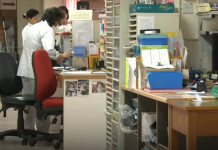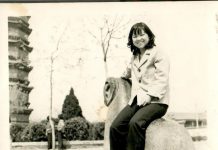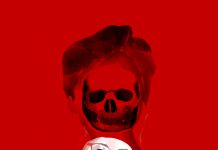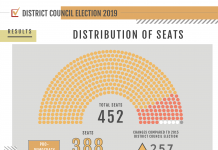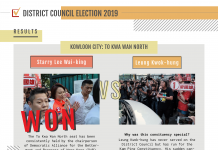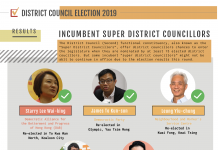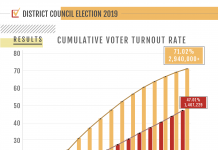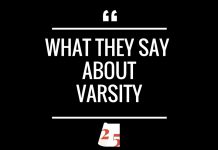Animator Johnee Lau Kwun-yiu finds human spirit in the ugly, unloved and discarded.
By Louie Cheng
He is the most unlikely of superheroes – a man with a sprout growing out of his armpit that turns into a caped crusader when he lifts his arm. But then, his creator is an unlikely cartoon talent.
Galaman, the name is a play on the Cantonese word for armpit, stormed into public consciousness during the 17th Incubator for Film and Visual Media (ifva) Festival last year. Galaman’s brave deeds and outstanding looks earned his creator, 25-year-old Johnee Lau Kwun-yiu a Silver Award in the ifva Animation Category.
In a city where people like their cartoons cutesy, Lau’s drawings are unconventional. Galaman is a crude outline of a human figure although his transformation into the muscular square-jawed superhero is preceded with that most classic of superhero gestures, the lifting of an arm.
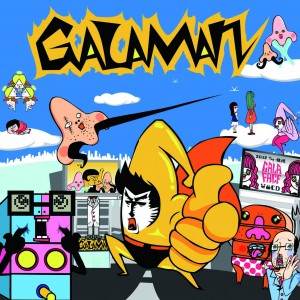
The Galaman episodes are characterised by outlandish, even absurd storylines, with heavy doses of toilet humour and wordplay-laden conversations; the cosmetics brand Max Factor, for instance, is sent up as “Gas Factor”, and one episode features a sex-changing robot called “Transgender”(變性金剛), a parody of the “Transformers” (變形金剛).
All these ideas originate from the talkative young animator who is keen to share even his unused jokes and one-liners. Thin, with long limbs and a pale complexion, Lau has as much an air of a 19th-century writer as he does of a 21st-century animator. “Actually, I planned to study Chinese language [at university] and be a writer or reporter,” he says.
As a secondary school student, Lau was into Chinese literature rather than art and so he studied the subject at A-level. He was expected to do well in the exam, but a piece of writing he submitted for his assessment probably changed the course of his life.
The essay, titled “Mourning a Pimple”, told the story of an acne pimple growing on the nose of a sleeping youth. In the story, the pimple is a martyr, doomed to die only to be replaced by another pimple – the reason for its existence to remind people they must wash. The tale would seem to be an allegory on futile sacrifice but the examiners were not impressed. Lau got a D for the subject, which crushed his confidence in his writing abilities and killed his dreams of being a writer.
“I had been studying for so many years, still, the exam result wasn’t good. And all the things I had learnt might not even be useful for work,” he stops and sighs. “I felt I had wasted my time.”
But Lau did not remain depressed for long. Soon he realised he actually liked creation, so he chose the two-year Higher Diploma in Multimedia Design and Technology at the Hong Kong Polytechnic University. His aim was to “start something fresh or regain my confidence in creation,” he says.
Although he was now interested in drawing and determined to learn animation, Lau did not manage to register on any relevant course. But this only drove him to teach himself. He managed to produce animated videos for his final year project for the Higher Diploma. “I bought reference books to learn how to use Flash on my own,” he recalls.
Lau then started to discover the meaning of being an animator. During the Higher Diploma graduation show, he broadcast his work “Noodle Battle”, a story about the ends of the same noodle, each boasting of being the longest.
After it was uploaded, a commenter left positive comments, praised the video as humorous and said it had made him develop an interest in the animation industry. This made Lau realise that, “although I was a loser in the public exams, I could still develop in another area after two years. Gradually, I could become a man to inspire dreams.”
After the success of “Noodle Battle”, Lau enrolled on another course, this time for a Bachelor’s Degree in Digital Media on the same campus. For his second final year project, he aimed higher. He wanted a product that could last beyond graduation, and looked back to a sketch he had made in a secondary school textbook for inspiration. That was how the Galaman series started.
Becoming an animator was by no means an easy task. According to Lau, Hong Kong does not really have an animation industry. He says there was no company for him to join and the local television broadcasters rarely broadcast local productions. He had no choice but to make his own and rely on internet platforms to show and distribute them.
On top of that, he could not find any local learning materials. For instance, it was very difficult to find samples and tutorials to show how the shape of the mouth changes when making the sounds for Cantonese speech. In order to lip sync the dialogue to his drawings, Lau took pictures of the mouth when speaking the lines and drew each frame accordingly. “It took a good week to draw the mouths,” he says.
There were other non-technical problems too. Lau’s family strongly opposed his career; they wanted him to find a job. He says the fact he did not find a job after graduation was a skeleton in the closet for his family.
He also received disparaging comments from some of those who viewed his work, not least from those who accused him of hankering after commercial success with Galaman. Others said Lau should learn more from Japanese animators. But Lau takes it all in his stride. “They bothered to leave a comment to criticise me,” he says. “It proves I am worth it.”
Business opportunities and public recognition followed the awards and things began to change for Lau. His family started to support him. “Sometimes, they use it to show off, it’s like turning from a family shame to a selling point,” he laughs.
But even more than his family’s acceptance, Lau is more delighted to see people increasingly accept the style of drawing he insists on sticking to. He intentionally uses “ugly” things such as armpits and nose hairs in his characters because he thinks these things are neutral in nature, but are unfairly tagged as disgusting.
Lau sides with the misfits, for him beauty lies in uniqueness. Even though the market usually prefers cutesy things, he persists in his style. He believes that if people can look at “ugly” things without judgement from a young age, they would not treat them as taboo.
Lau says he was touched when a parent told him the children loved watching his videos. “I was wondering if the animations I am making now will give children a different childhood memory.”
He also now realises that the lessons he learnt at secondary school are actually useful. Chinese literature has built up his sensitivity to words, which helps him to play on so many terms and names with double meanings.
The skill has even come in handy as an addition to his livelihood as he occasionally draws wordplay cards for sale at arts and creative markets around the city.
But even as his path appears to be getting smoother and the future becomes clearer, Lau struggles with a sense that he has missed out on a lot socially. He realises that since becoming an animator six years ago, he rarely does routine things such as shopping or going out with friends to sing karaoke or watch movies. He even points to the cardigan he is wearing, which he says is three years old and has a hole in the armpit.
Producing animation is so time-consuming that Lau feels he no longer talks to people enough. Therefore, he treasures and seizes on the chance to talk with friends, to the extent that they sometimes get annoyed by his verbosity.
The compulsion to talk is also apparent in his interview with Varsity, during which Lau constantly worries that his words may not be understood – often supplementing his answers with the question: “Do you get what I mean?”
To reconnect with the world, Lau is planning to shoot some videos featuring himself, such as a tutorial on drawing. “I would like to try to have more interactions, maybe you give me a topic, I draw it for you instantly online,” he explains. However he still feels a bit shy and nervous about this idea.
No matter what, Lau is clear about his goal – to maintain a life-long devotion to animation. “During my lifetime, I hope to produce a movie for not only Galaman, but all of my characters. Then a more long-term goal would be a theme park like Disneyland.”
Edited by Caleb Ho





